Popiglio Watch Towers
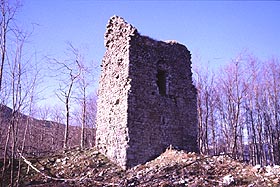 |
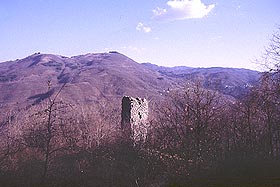 |
| The first tower, at the top of the mountain. |
The other tower viewed from the first tower. |
Popiglio rises in the heart the Pistoiese Mountain along the road SS12 of the Abetone and the Brennero. From Pistoia it is reachable following the SS66 until S.Marcello Pistoiese, then La Lima and following the indications towards Lucca. After a kilometer our right will find the signal for the little road that guide us up to the the 'Torri'. From Lucca we follow the SS12 and passed the country of Popiglio we continue until finding on the left the aforesaid crossroad (not very marked from this direction).
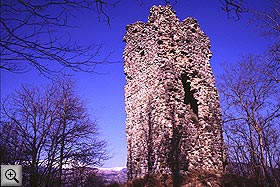 |
|
The second tower.
|
The northern side of the valley is dominated by Popiglio. The 'castrum de Popilio' is noted since the high Middle Age, even if the only certain notice is those relative to its ownership by the counts Guidi. As said the castle was dominated from the Pistoiesi and then became part of the territories of the Florentine Republic.
In the village of Popiglio there are no more traces of the ancient fortifications and of the town-walls that enclosed it, while on the vertex of the mountain overlooking it there still rise two powerful towers.
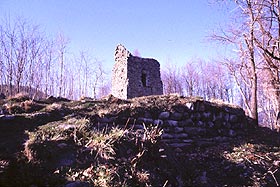 |
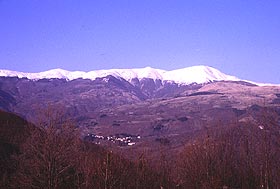 |
| The main tower with the scarce
rests of the encircling walls. |
The landscape from the towers |
The first tower, partially collapsed, rises today for approximately half of its original height and very scarce remains of the elliptically shaped walls that encircled it can still be found. Probably inside of this curtain rose other buildings, as we can imagine from the remains of a collapsed construction on the north east side, and this was surely the seat of the commander of the entire defensive system.
The other tower did not have additional fortifications and probably acted as an intermediate connection between the country and the main point of the defensive system, with its remanants today higher than those of its 'twin'. From this position we can admire an unique landscape on the Apennine Mountain and dominate the entire underlying valley.
| Back to Homepage |
| Back to Castles Index |